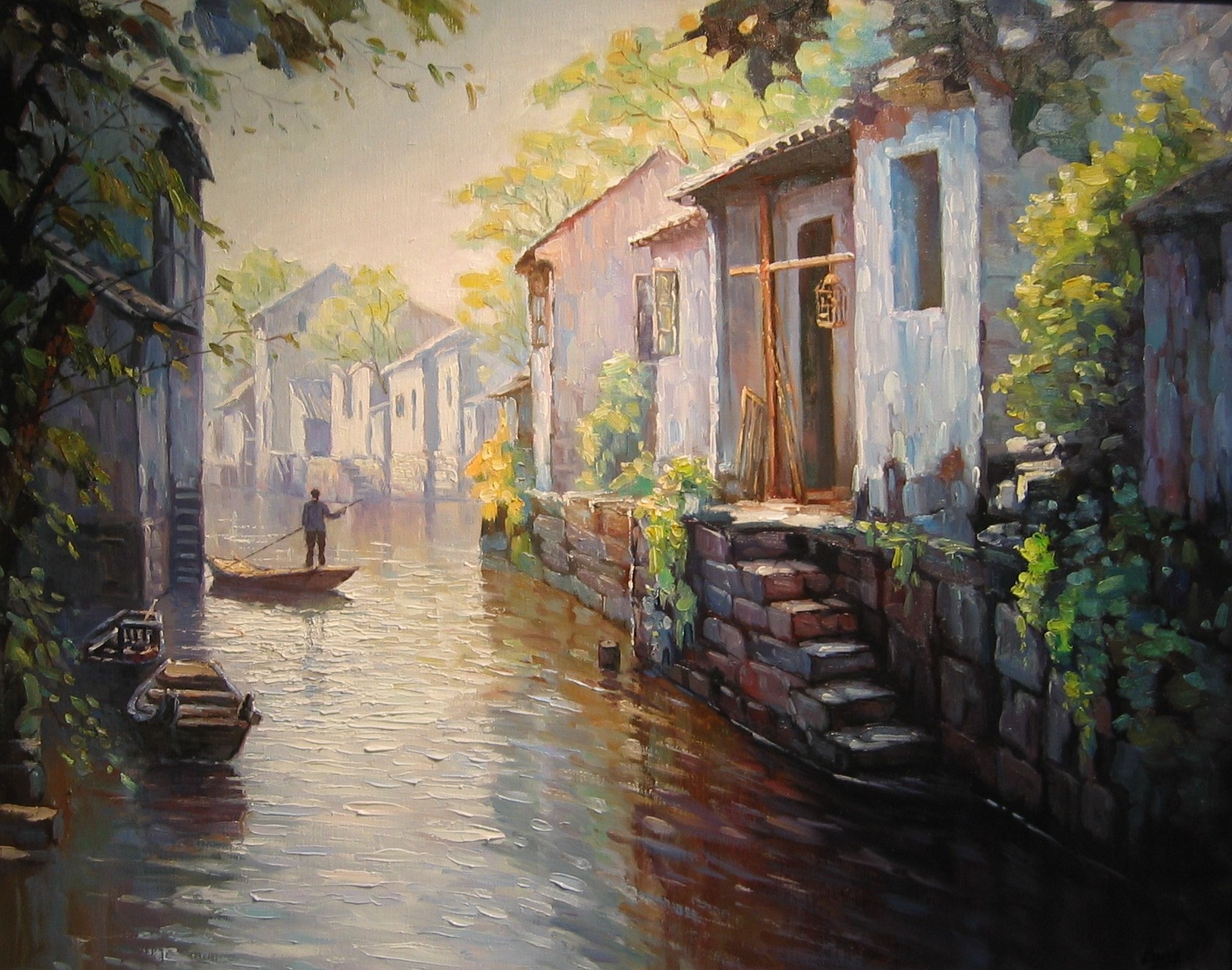Ten Oil Painting Techniques for Beginners:
Oil paintings are extremely versatile. They can be used thickly in impasto or extremely thinly in glazes; And, they can be opaque or transparent as well. The following is ten oil painting techniques to help the beginners to learn from.
Oil Painting Techniques No.1:
Always lay your oil paints out on your palette in the same o rder so that, with time, you'll be able to pick up a bit of a colour instinctively. rder so that, with time, you'll be able to pick up a bit of a colour instinctively.
Oil Painting Techniques No.2:
The proportion of oil (medium) should be increased for each subsequent layer in an oil painting – known as painting 'fat over lean' – because the lower layers absorb oil from the layers on top of them. If the upper layers dry faster than the lower ones, they can crack.
Oil Painting Techniques No.3:
Avoid using Ivory Black for an underpainting or sketching as it dries much slower than other oil paints.
Oil Painting Techniques No.4:
Pigments containing lead, cobalt, and manganese accelerate drying. They can be mixed with other colours to speed up drying and are ideal for under layers. (Student-quality paints usually contain cheaper alternatives to these pigments, generally labelled hues.)
Oil Painting Techniques No.5:
Use linseed oil for an underpainting or in the bottom layers of any oil painting done wet-on-dry as it dries the most thoroughly of all the oils used as mediums.
(Ten Oil Painting Techniques for Beginners)
Oil Painting Techniques No.6:
Avoid using linseed oil as a medium in whites and blues as it has a marked tendency to yellow, which is most notable with light colours. Poppy oil is recommended for light colours as it has the least tendency to yellow (although it does dry slower).
Oil Painting Techniques No.7:
Don't dry your oil paintings in the dark. This may cause a thin film of oil to rise to the surface, yellowing it. (This can be removed by exposure to bright daylight.)
Oil Painting Techniques No.8:
If, as the paint on your palette dries it forms a lot of wrinkles, too much oil (medium) has been added.
Oil Painting Techniques No.9:
If you're not sure whether a bottle of mineral or white spirits is suitable for oil painting, put a tiny quantity on a piece of paper and let it evaporate. If it evaporates without leaving any residue, stain, or smell, it should be fine.
Oil Painting Techniques No.10:
If you want to clean away a layer of oil paint or oil varnish, use alcohol, which is a powerful solvent.
Hope the above oil painting techniques can be helpful for you. If any other question about oil painting techniques, please feel free to contact with us. Thank you for reading.
Tag: Ten Oil Painting Techniques for Beginners.
Edited By Xiamen Romandy Art Co., Ltd.
Refer to: http://painting.about.com/cs/oils/a/tips_oils.htm |